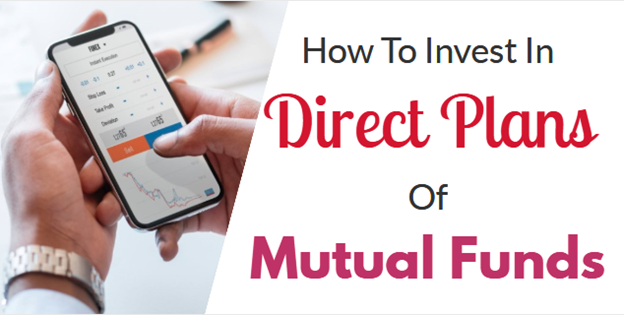Thinking how to invest in direct mutual funds offline or online? Investors with a DIY (do it yourself) mantra are those who are often found asking how to buy mutual funds directly in India. Direct investments in mutual funds naturally do away with the need for getting a distributor on board. It not only helps investors save greatly on costs of transactions but also benefit them in the form of lower fees which are a key feature of mutual fund direct plans. The cost difference may appear nominal initially although over a sustained duration, owing to compounding, the value based difference may be a few lakh rupees! It is not as surprising as it may sound to you now.

Hence, along with your quest of finding and investing in suitable mutual funds which are aligned with your financial objectives, you should also browse through various options for direct investments. Take a look at various platforms for directly investing in mutual funds. Choose a platform with allied services and helpful research and insights as well. You can always find out how to buy direct mutual funds online in India and there are several options available. However, before you commence the process, you should keep your Aadhar, PAN, bank account details (MICR, IFSC code, account number, account type) and online banking transaction login information handy.
Best way to invest in direct mutual funds- Some helpful tips
You can always rely on a good online investment platform for deploying investments in suitable mutual funds like the Aditya Birla Sun Life Tax Relief 96 or similar types of funds.
The Know Your Customer (KYC) will be linked to your PAN number and when you invest via different online platforms, they will verify whether KYC has been completed through your PAN information. Post completing KYC procedures, you can invest through various modes.
- Websites of mutual funds- Post deciding on funds to invest in, i.e. the SBI Nifty 50 Index Fund or other successful funds, you can directly make your investment on the online portal of the AMC (asset management company). If the KYC procedure is completed, you can register your account with the mutual fund firm/company by providing personal details. Select your plan/scheme for investment and tick Direct for your plan type. You will find Dividend and Grown options and choose wisely as per your financial objectives. You will have to choose the investment type, i.e. lump sum amount or via SIPs and also the holding type, i.e. demat, non-demat and so on. You will have to put in the RIA code if you are taking services from a registered investment advisor and select the payment method, i.e. NEFT, net banking, IMPS, debit card and so on.
Put in banking details and verify and complete the transaction. Forms may require verification through OTPs and note down your transaction reference number carefully. Post completion of payment online, you will get a confirmation message on your mobile phone or email. You will not have to enter information again for additional unit purchases in direct mutual fund plans.
- MFU purchases- You can directly buy units of mutual funds via MFU or Mutual Fund Utilities via single window transactions across various mutual fund plans/schemes. MFU is a platform shared by various fund houses. You have to create your account and you can transact across mutual funds offered by almost all leading AMCs. Through the CTF (common transaction form) or online portal, you can buy units of multiple mutual funds in varying fund houses. There are no extra charges for investments on the portal since the platform costs are shared by the fund houses in question. You will first have to make your CAN (common account number) which is the reference number uniquely issued by the MFU.
The CAN will be mapping your current mutual fund portfolios throughout fund houses. e-CAN can be made online through https://mfuonline.com/ and then create your user ID and setup a password accordingly. You can then make transactions through CAN Transaction and by choosing Purchase for lump sum investments or SIPs accordingly. Use Switch to juggle between Direct and Regular Plans. Choose Direct and then Proceed. RIA details may be needed and if you do not have the same, you can leave the form blank. You can invest in a whopping 12 schemes at one time altogether.
- Investment/Robo-Advisors- Understanding and managing financial goals, risk profile, investment strategies, taxation, tracking, asset allocation and portfolio reviews can be daunting. When investing via direct plans, you have to manage everything yourself or choose a financial planner/investment advisor. Robo-advisors are online platforms with technology running algorithms for creating automated and customized portfolio allocation and providing recommendations on investments. A good advisor will help you find the best investment plans in this regard.
Buying direct plans offline- A handy guide
If you are investing directly in mutual funds offline, here is what you need to do:
- Registrar or AMC office- Once you have chosen the suitable fund for investment, you can visit your nearest AMC centre/office or even the registrar office for investments. You have to fill up the SIP/Common application form, putting in the mutual fund scheme name and other information. While investing through SIPs, give your NACH mandate form with all details. Submit forms to the office of the RTAs (Registrar and Transfer Agents) or AMC.
- Mutual fund Utilities- for the MFU, you need the CAN as mentioned earlier. You have to submit the PayEezz form which is the facility where investors can register for the one-time mandate and offer standing instructions to bankers for authorizing MFU for debiting their accounts for subscriptions/transactions in the future (SIP/lump sum amounts). You do not have to provide cheques or other instructions for payments anytime you invest via MFU. You can register multiple SIPs with the same PRN (PayEezz reference number).
- Investment Advisors- You can dispatch documents for transactions to investment advisors for mutual fund investments. The advisors will get the requisite newsfeed from the mutual fund house and can track all investments accordingly.



